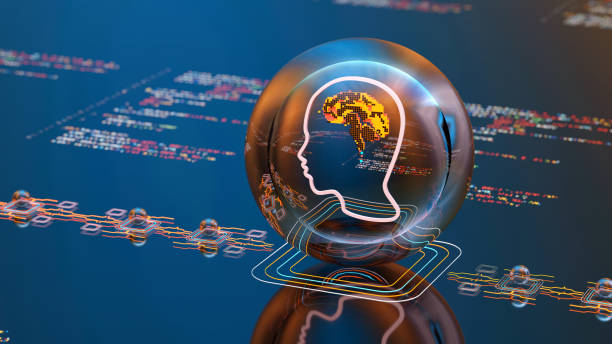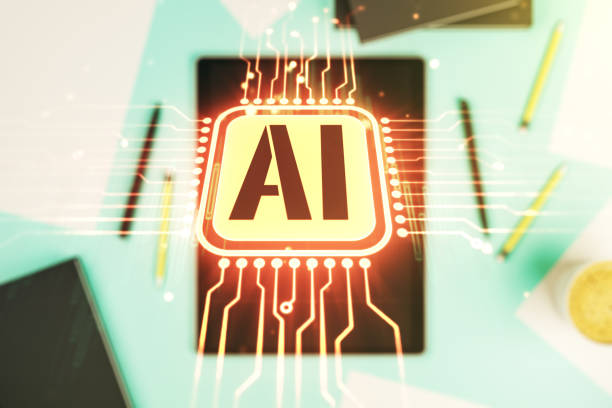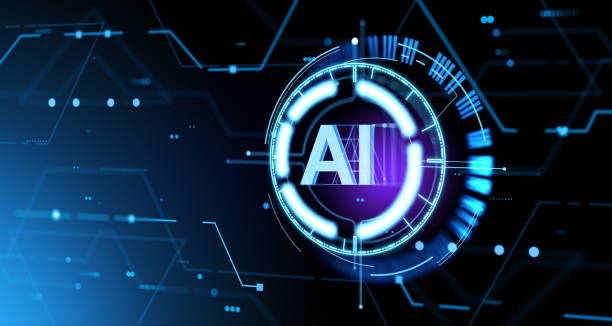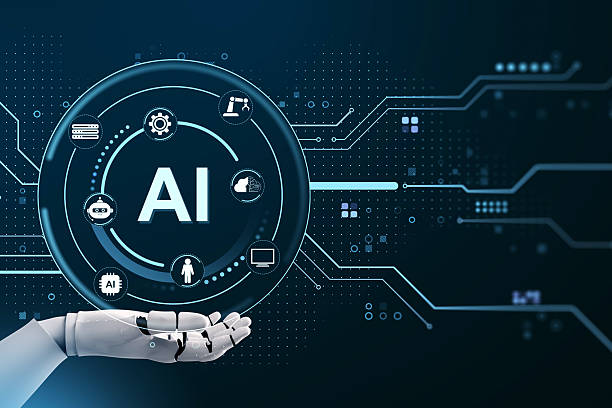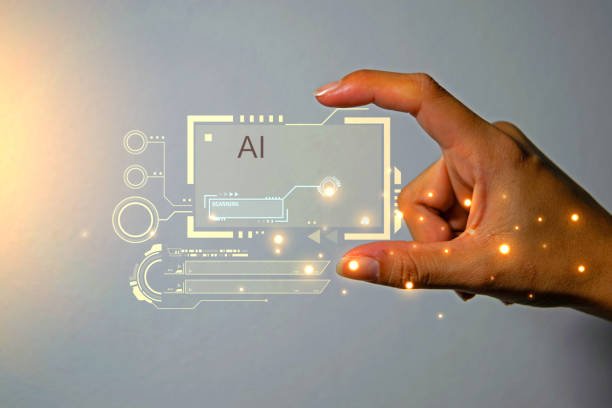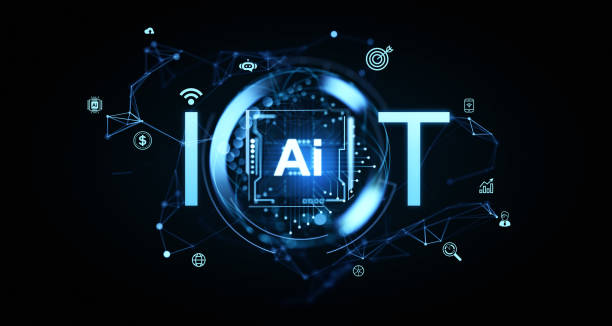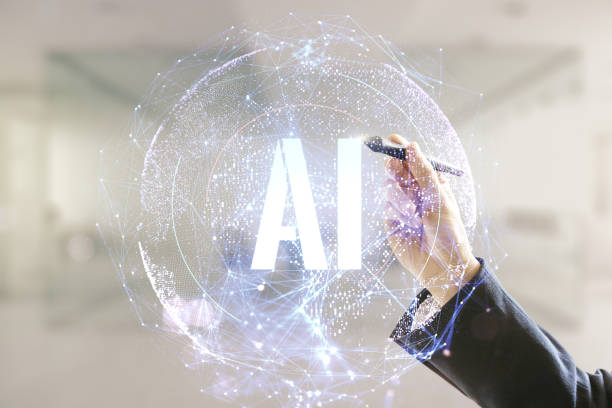What is artificial intelligence and how does it work?
What is artificial intelligence and how does it work?
#Artificial_Intelligence (AI) is a branch of computer science that deals with building machines capable of performing tasks that typically require human intelligence.
These tasks include learning, reasoning, problem-solving, language comprehension, and pattern recognition.
Wikipedia defines artificial intelligence as follows.
In simple terms, artificial intelligence tries to program computers to think and make decisions like humans.
Artificial intelligence uses various algorithms and models to process data and learn.
One of the most important of these algorithms is Machine Learning, which allows machines to learn from data without explicit programming.
Deep Learning, a subset of machine learning, uses artificial neural networks with multiple layers to analyze complex data.
In this way, artificial intelligence can identify patterns, make predictions, and make smart decisions.
The main components of an artificial intelligence system include:
- Data: The artificial intelligence system needs a lot of data to learn and improve its performance.
- Algorithms: Algorithms are a set of instructions that the artificial intelligence system uses to process data and perform tasks.
- Models: Models are mathematical representations of data and algorithms that the artificial intelligence system uses to make predictions and decisions.
In short, artificial intelligence is an effort to simulate human intelligence in machines, using algorithms, models, and data.
Are you worried about losing customers who don’t have a professional online store website?
Forget those worries with online store website design by Rasaweb!
✅ Significant increase in sales and visitor-to-customer conversion rate
✅ Professional and user-friendly design that builds customer trust
⚡ Get free consultation from Rasaweb
Types of Artificial Intelligence: Approaches and Classifications
Types of Artificial Intelligence: Approaches and Classifications
Artificial intelligence can be classified based on different capabilities and approaches.
In terms of capability, there are two main categories:
- Narrow AI or Weak AI: This type of artificial intelligence is designed to perform specific tasks and performs well in its limited field.
Most of today’s artificial intelligence systems fall into this category.
Examples of narrow artificial intelligence include voice assistants such as Google Assistant and Siri, movie recommendation systems on Netflix, and facial recognition systems. - General AI or Strong AI: This type of artificial intelligence has the ability to understand, learn, and perform any task that a human is capable of doing.
General artificial intelligence is still under development and does not currently exist.
In terms of approach, artificial intelligence can be divided into the following categories:
- Machine Learning: In this approach, machines learn patterns using data and perform their tasks without explicit programming.
- Deep Learning: This approach uses artificial neural networks with multiple layers to analyze complex data.
- Expert Systems: These systems use specialized knowledge in a specific field to solve problems.
- Natural Language Processing (NLP): This approach allows machines to understand and process human language.
- Computer Vision: This approach allows machines to understand and interpret images and videos.
Choosing the right approach depends on the type of problem and the available data.
For example, for pattern recognition in images, deep learning is usually the best option, while for solving specialized problems, expert systems may be more suitable.
Applications of Artificial Intelligence in Various Industries: Real-World Examples
Applications of Artificial Intelligence in Various Industries: Real-World Examples
Artificial intelligence is currently used in many different industries and is rapidly expanding.
Here are a few examples of the applications of artificial intelligence in various industries:
- Healthcare: Artificial intelligence is used in diagnosing diseases, developing new drugs, personalizing treatment, and improving patient care.
For example, artificial intelligence systems can analyze medical images and detect signs of disease more accurately than doctors. - Finance: Artificial intelligence is used in fraud detection, risk management, providing personalized financial services, and automating banking processes.
- Manufacturing: Artificial intelligence is used in automating production lines, quality control, predicting machine failures, and optimizing the supply chain.
- Transportation: Artificial intelligence is used in the development of self-driving cars, optimizing transportation routes, managing traffic, and improving road safety.
- Retail: Artificial intelligence is used in personalizing the customer shopping experience, predicting demand, managing inventory, and improving customer service.
Artificial intelligence in any industry can help improve efficiency, reduce costs, and increase profitability.
| Industry | Application of Artificial Intelligence |
|---|---|
| Healthcare | Disease Diagnosis |
| Finance | Fraud Detection |
| Manufacturing | Automation of Production Lines |
Machine Learning vs. Deep Learning: Differences and Similarities
Machine Learning vs. Deep Learning: Differences and Similarities
Machine Learning (ML) and Deep Learning (DL) are both subsets of artificial intelligence, but there are key differences between them.
Machine learning is a broader concept that includes various algorithms that allow machines to learn from data.
Deep learning is a subset of machine learning that uses artificial neural networks with multiple layers (deep networks) to analyze data.
Click here to preview your posts with PRO themes ››
The main difference between machine learning and deep learning is in how features are extracted from data.
In traditional machine learning, engineers must manually extract important features from the data and then train the machine learning algorithm based on these features.
In deep learning, neural networks are able to automatically extract features from data.
This means that deep learning can work with more complex and larger data and provide better results.
In short, the main similarities and differences between machine learning and deep learning are:
- Similarities: Both methods are used to build intelligent systems that can learn from data and perform various tasks.
- Differences: Deep learning uses deep neural networks, while machine learning uses more diverse algorithms.
Deep learning can automatically extract features, while in traditional machine learning, this must be done manually.
Deep learning usually requires more data than machine learning.
The choice between machine learning and deep learning depends on the type of problem, the volume of data, and the available computing resources.
For simple problems with small data, traditional machine learning may be sufficient.
But for complex problems with large data, deep learning is usually the best option.
Does your current online store website design not generate the expected sales?
Rasaweb specializes in professional online store website design!
✅ An attractive and user-friendly site aimed at increasing sales
✅ High speed and security for an ideal shopping experience⚡ Get a free online store design consultation with Rasaweb!
Natural Language Processing (NLP): How do computers understand language?
Natural Language Processing (NLP): How do computers understand language?
Natural Language Processing (NLP) is a branch of artificial intelligence that allows computers to understand, interpret, and generate human language.
NLP includes a set of techniques and algorithms that are used to analyze text, understand the meaning of words and sentences, and generate new text.
One of the main challenges in NLP is ambiguity in language.
A word or sentence may have different meanings depending on the context and how it is used.
NLP uses various techniques to resolve ambiguity and understand the true meaning of the text, including:
- Parsing: Parsing analyzes the grammatical structure of a sentence and identifies the relationships between words.
- Semantic Analysis: Semantic analysis understands the meaning of words and sentences and establishes the connection between them.
- Sentiment Analysis: Sentiment analysis determines the emotions and attitudes present in the text.
The applications of NLP are very broad and include:
- Machine Translation: Automatic translation of text from one language to another.
- Voice Assistants: Understanding and responding to users’ voice commands.
- Chatbots: Communicating with users via text or voice.
- Text Summarization: Generating short and useful summaries of long texts.
NLP is constantly evolving, and with the use of machine learning and deep learning techniques, the accuracy and efficiency of NLP systems have increased dramatically.
Computer Vision: How do computers see images?
Computer Vision: How do computers see images?
Computer Vision is a branch of artificial intelligence that allows computers to understand and interpret images and videos.
Computer vision includes a set of techniques and algorithms that are used to identify objects, recognize patterns, and understand visual scenes.
One of the main challenges in computer vision is the variability of images.
An object may appear in different shapes in different images, depending on the light, viewing angle, and background.
Computer vision uses various techniques to deal with this variability, including:
- Feature Detection: Detecting prominent features in images, such as edges, corners, and key points.
- Object Classification: Classifying objects in images into different categories.
- Object Detection: Detecting and locating specific objects in images.
The applications of computer vision are very broad and include:
- Self-Driving Cars: Detecting obstacles and traffic signs.
- Surveillance Systems: Detecting suspicious and unusual activities.
- Facial Recognition: Identifying individuals through their facial images.
- Medical Imaging: Diagnosing diseases through medical images.
Computer vision is constantly evolving, and with the use of machine learning and deep learning techniques, the accuracy and efficiency of computer vision systems have increased dramatically.
Artificial intelligence has opened new doors to the world of images.
Ethics in Artificial Intelligence: Key Challenges and Considerations
Ethics in Artificial Intelligence: Key Challenges and Considerations
The development and use of artificial intelligence are associated with important ethical challenges.
One of these challenges is bias in artificial intelligence algorithms.
If the training data used to build an artificial intelligence system contains bias, the system will also unconsciously learn the bias and may make unfair decisions.
This issue is particularly important in areas such as hiring, lending, and criminal justice.
Another challenge is the transparency and explainability of artificial intelligence decisions.
In many cases, how an artificial intelligence system makes decisions is complex and incomprehensible.
This issue can create problems in the areas of accountability and responsibility.
If an artificial intelligence system makes a wrong decision, it will be difficult to determine who is responsible and how to prevent it from happening again.
Click here to preview your posts with PRO themes ››
In addition, the use of artificial intelligence can lead to job losses.
With the automation of many tasks, many people may lose their jobs.
This issue requires a careful examination of the social and economic effects of artificial intelligence and the adoption of policies to reduce its negative effects.
To address these ethical challenges, it is necessary to:
- Design artificial intelligence algorithms to be fair and unbiased.
- Increase the transparency and explainability of artificial intelligence decisions.
- Carefully examine the social and economic effects of artificial intelligence and adopt policies to reduce its negative effects.
Ultimately, ethics in artificial intelligence requires cooperation between artificial intelligence experts, policymakers, and civil society to ensure that artificial intelligence is developed and used for the benefit of all humanity.
Artificial intelligence is a powerful tool and should be used responsibly.
The Future of Artificial Intelligence: What Should We Expect?
The Future of Artificial Intelligence: What Should We Expect?
The future of artificial intelligence is very bright and full of potential.
It is expected that artificial intelligence will play an increasing role in our lives in the coming years and will create profound changes in various industries.
Here are a few of the key expectations of the future of artificial intelligence:
- Progress in Artificial General Intelligence (AGI): Currently, most artificial intelligence systems are limited and only perform well in a specific field.
But in the future, it is expected that we will see significant progress in the field of artificial general intelligence, which will allow machines to have the ability to understand, learn, and perform any task that a human is capable of doing. - More Automation: Artificial intelligence will increasingly be used to automate various tasks in various industries.
This can lead to increased productivity, reduced costs, and improved quality of products and services. - More Personalization: Artificial intelligence allows companies to more accurately personalize their products and services based on the needs and preferences of each individual.
This can lead to increased customer satisfaction and improved customer loyalty. - Development of Robotics: Artificial intelligence will play an important role in the development of more advanced and intelligent robots.
Robots can work in dangerous or difficult environments and perform tasks that are dangerous or impossible for humans. - Improved Healthcare: Artificial intelligence can help improve disease diagnosis, develop new drugs, personalize treatment, and improve patient care.
Of course, the development of artificial intelligence also comes with challenges, including ethical issues, security risks, and social and economic effects.
To fully benefit from the potential of artificial intelligence, it is necessary to take these challenges seriously and find appropriate solutions for them.
Did you know that 94% of first impressions of a company are related to its website design?
By providing professional corporate website design services, Rasaweb helps you make the best first impression.
✅ Creating a professional and reliable image of your brand
✅ Easier attraction of potential customers and improvement of online positioning⚡ Get a free corporate website design consultation
How to Learn Artificial Intelligence? Learning Resources and Paths
How to Learn Artificial Intelligence? Learning Resources and Paths
Learning artificial intelligence can be an exciting and challenging journey.
Fortunately, there are various learning resources and paths for those interested in this field.
Here are a few of the most important resources and paths for learning artificial intelligence:
- Online Courses: Online learning platforms such as Coursera, Udemy, and edX offer numerous courses in artificial intelligence, machine learning, and deep learning.
These courses are usually taught by professors from top universities and include educational videos, exercises, and practical projects. - Books: There are many books on artificial intelligence that can help you understand the basic and advanced concepts of this field.
Some of the famous books in this field include “Artificial Intelligence: A Modern Approach” by Stuart Russell and Peter Norvig, and “Deep Learning” by Ian Goodfellow, Yoshua Bengio, and Aaron Courville. - Scientific Articles: Reading scientific articles published in reputable conferences and journals can help you understand the latest advances in the field of artificial intelligence.
- Practical Projects: The best way to learn artificial intelligence is to do practical projects.
You can implement simple artificial intelligence systems using existing data and gradually do more complex projects. - Online Forums: Participating in online forums and talking to other artificial intelligence enthusiasts can help you learn, solve problems, and share knowledge.
Click here to preview your posts with PRO themes ››
To start learning artificial intelligence, it is suggested that you become familiar with basic concepts such as algorithms, data structures, and statistics.
Then you can start implementing artificial intelligence algorithms by learning programming languages like Python and libraries like NumPy, Pandas, and Scikit-learn.
Artificial intelligence requires practice and persistence.
| Learning Resources | Type | Description |
|---|---|---|
| Coursera, Udemy, edX | Online Courses | Educational courses with video, exercise, and project |
| Artificial Intelligence Books | Book | Books for understanding basic and advanced concepts |
| Scientific Articles | Article | Articles to understand the latest advances |
Key Points for Success in the Field of Artificial Intelligence
Key Points for Success in the Field of Artificial Intelligence
The field of artificial intelligence is a dynamic and competitive field, and to succeed in this field, it is necessary to consider the following key points:
- Continuous Learning: Artificial intelligence is rapidly evolving, so it is necessary to be constantly learning and familiar with the latest advances and techniques.
- Strong Programming Skills: To implement artificial intelligence algorithms, you need strong programming skills.
Python is one of the most popular languages for artificial intelligence. - Mathematical and Statistical Skills: Understanding mathematical and statistical concepts is essential for understanding artificial intelligence algorithms and analyzing data.
- Problem Solving: Artificial intelligence deals with solving complex problems, so it is necessary to have strong problem-solving skills.
- Creativity: To innovate in the field of artificial intelligence, you need creativity and brainstorming.
- Collaboration: Artificial intelligence is often a team effort, so it is necessary to have the ability to collaborate with others.
In addition, it is important to have a passion for learning and solving problems.
Artificial intelligence is a challenging field, but with effort and perseverance, you can succeed in it.
Don’t forget that artificial intelligence is an arena for learning and expertise.
Frequently Asked Questions
| Question | Answer |
|---|---|
| What is artificial intelligence? | It is the simulation of human intelligence in machines programmed to think like humans and mimic their actions. |
| What are the main branches of artificial intelligence? | Includes machine learning, deep learning, natural language processing, computer vision, and robotics. |
| What is machine learning (Machine Learning)? | It is a branch of artificial intelligence that focuses on enabling systems to learn from data and identify patterns without explicit programming. |
| Mention examples of artificial intelligence applications in our daily lives. | Voice assistants (such as Siri and Alexa), recommendation systems on Netflix and Amazon, self-driving cars, and facial recognition programs. |
| What is deep learning (Deep Learning)? | It is a subset of machine learning that uses multi-layered (deep) artificial neural networks to process large amounts of data. |
| What is Natural Language Processing (NLP)? | It is a branch of artificial intelligence that focuses on enabling computers to understand, interpret, and generate human language. |
| What are some ethical concerns related to artificial intelligence? | Includes bias in data, privacy, job loss, and liability in case of errors. |
| What are the main benefits of artificial intelligence? | Increased efficiency, improved decision-making, automation of repetitive tasks, and discovery of complex patterns in data. |
| How is artificial intelligence used in the field of health care? | In diagnosing diseases, discovering drugs, analyzing medical images, and personal care for patients. |
| How do you see the future of artificial intelligence? | It is expected to continue to develop at a rapid pace, affecting all aspects of human life, from industry to education and entertainment. |
And other services of Rasa Web advertising agency in the field of advertising
Intelligent Link Building: Designed for businesses looking to engage users by customizing the user experience.
Intelligent Conversion Rate Optimization: A fast and efficient solution for managing campaigns with a focus on attractive user interface design.
Intelligent Website Development: An effective tool for analyzing customer behavior with the help of Google Ads management.
Intelligent Reporting: A creative platform for improving website traffic with marketing automation.
Intelligent Website Development: A fast and efficient solution to increase website traffic with a focus on intelligent data analysis.
And more than hundreds of other services in the field of internet advertising, advertising consulting and organizational solutions
Internet Advertising | Advertising Strategy | Advertisement Report
Resources
What is artificial intelligence and how does it work?
,Artificial intelligence in Wikipedia
,What is artificial intelligence? What types does it have and what applications does it have?
,Introduction to Artificial Intelligence: Everything You Need to Know About AI
? With Rasaweb Afarin, your business flies in the digital world! We offer innovative and results-oriented solutions for your growth with comprehensive services including responsive website design, SEO, and content marketing.
📍 Tehran, Mirdamad Street, next to the Central Bank, South Kazerun Alley, Ramin Alley No. 6

